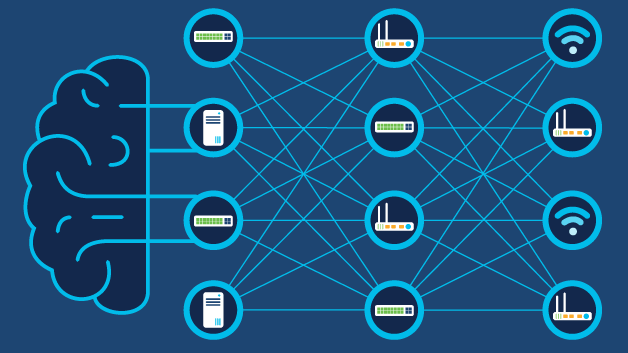What are the benefits of a network fabric?
A network fabric delivers the following benefits:
- It abstracts base physical topology to create virtualized planes that simplify deployment and operations.
- It applies services and enforces policies uniformly across wired and wireless users and devices.
- It lowers business risk by limiting traffic propagation, containing threats, and boosting security.
- It creates standardized building blocks such that the network can be scaled easily.
Because of their advantages, such fabrics are being adopted in many organizations.
How does a network fabric work?
The physical, or underlay, part of the fabric is made up of switches, routers, and Wi-Fi devices. It provides a simple, scalable, and robust foundation for communication among network devices. The virtualized, or overlay, part of a network fabric is used for transporting user data.
The virtualized part of the fabric is created by adding specific headers to data packets. Network devices interpret these headers and either block or let packets through. This conditional routing makes it appear that a different network is in place that connects only a subset of devices, depending on the headers.
Virtualization provides the value in a network fabric. A network’s underlay can be virtualized and partitioned into several overlay networks that can be optimized individually to meet diverse needs with distinct policies.
A fabric also has extensive mechanisms for policy-based control and automation that allows it to respond rapidly to any modifications based on business needs.
Why do you need a network fabric?
Modern-day organizations depend heavily on their networks to function. A network not only provides connectivity, but it's also responsible for authenticating users, securing sensitive data, and providing good user experience.
An organization may have different types of users, such as managers, staff, security guards, contractors, and guests. It may also have IoT devices, such as cameras, door locks, and temperature and lighting controls. And it may have a variety of applications, such as financial, CRM, and sales, as well as two access types: wired and wireless.
A network fabric for such organizations is essential, so that all requirements of the diverse user base can be met, and policies can be applied uniformly and independent of the underlay.
Fabrics are used in organizations' campus, branch, WAN, and hybrid data center networks. Individual fabrics in each of these distinct physical networks can be set up to communicate with one another to deliver the benefits that come from a single integrated, enterprisewide fabric.
How do you create and manage a network fabric?
A network controller coupled with capable network devices can greatly ease the process of building and managing a fabric.
A network controller creates the fabric by configuring devices with policies to act on packet header tags. Along with a AAA server, it authenticates, authorizes, and places endpoints in the appropriate overlay of the fabric by assigning them the right tag. The controller also monitors and verifies that policies are being followed and takes corrective actions when they're not.
Fabric-capable switches, routers, and wireless equipment add the right tag to all traffic generated by endpoints that are directly connected to them. They interpret tags in received packets and either forward or drop them as per assigned policies. They must be programmable so that access, quality-of-service (QoS), and other policies can be automated.
How can you migrate a traditional network to a fabric-based one?
It's relatively easy to build a fully automated network fabric from scratch. Migrating a traditional network to a fabric can be more involved. It need not be a "rip and replace" exercise, though it does need some careful planning to prevent current users from being adversely affected during the transition.
The transition from a traditional network to an automated fabric may need intermediate steps to facilitate a gradual changeover. Actual steps may depend on the capabilities of the controller and network devices.
